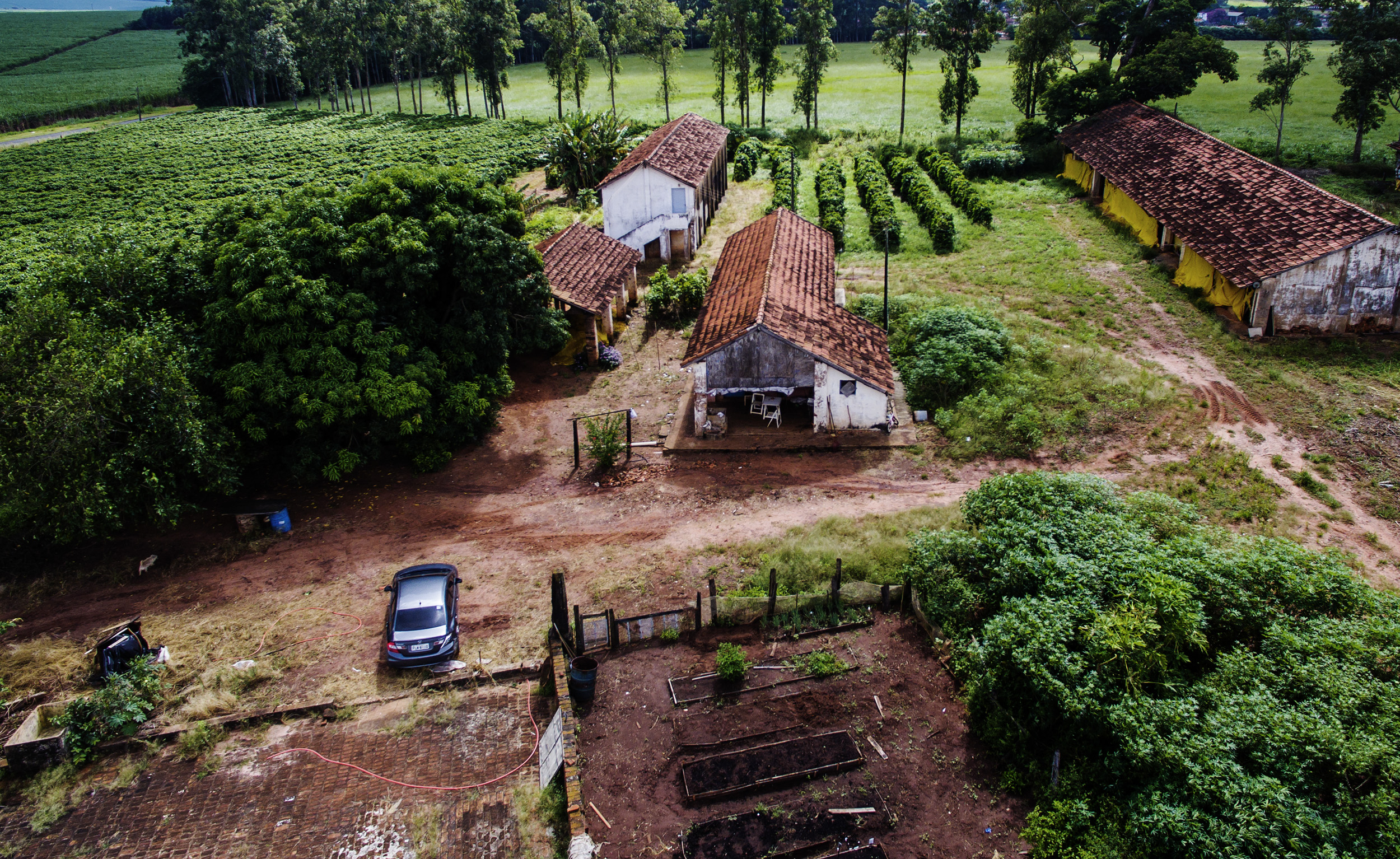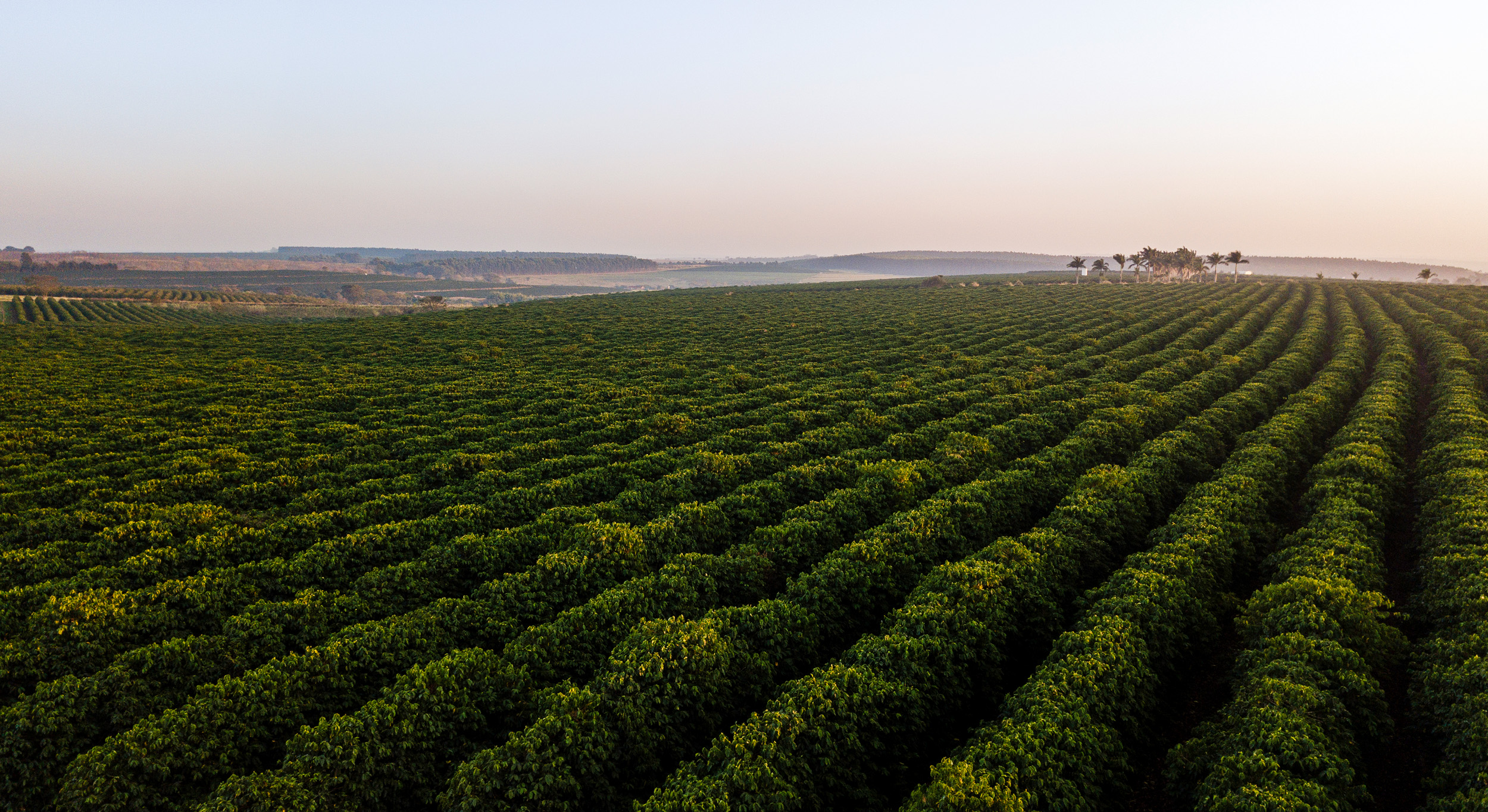Brazil’s coffeelands are vast and diverse, making it impossible to describe a ‘typical’ Brazilian coffee farm. The popular perception of Brazilian farms is dominated by large, mechanised plantations. Ipanema Coffees in Minas Gerais, for example, has some claim to being the largest coffee farm in the world, with 5,500 hectares of land producing 7,000 tonnes (7,700 US tons) of coffee per year — more than the entire output of Panama or Bolivia.
Nearly 60% of the arabica coffee produced in Brazil is grown by smallholders on farms of less than 10 hectares, however (Global Coffee Platform 2018). There are large variations between different regions in terms of the typical systems of production and the varieties grown, as well as in economic factors such as farm size and access to credit (Volsi et al 2019).
 A small farm in Brazil producing coffee and raising chickens
A small farm in Brazil producing coffee and raising chickens
One factor that sets Brazil apart from other coffee-producing countries is the flat terrain in many of its major growing regions. This allowed large, mechanized farms to develop, and they have become some of the most efficient coffee producers in the world. Smallholder farmers, on the other hand, are generally confined to more marginal land, often growing coffee on steep slopes where mechanised harvesting is impossible (Watson and Achinelli 2008).
 The flat terrain in much of Brazil’s coffeelands is ideal for mechanised farming
The flat terrain in much of Brazil’s coffeelands is ideal for mechanised farming
Brazil’s coffee industry was shaped by a wave of modernisation and consolidation that began with the collapse of the International Coffee Agreement in 1989 (see Lesson 0.04). With prices dropping precipitously, the industry was forced to modernise rapidly and attempt to differentiate, either by producing higher quality beans or by reducing the cost of production.
In order to improve efficiency, many farmers embraced modern technology and techniques. These included increased planting density, increased use of agricultural machinery, the development of new varieties, and the adoption of irrigation techniques.